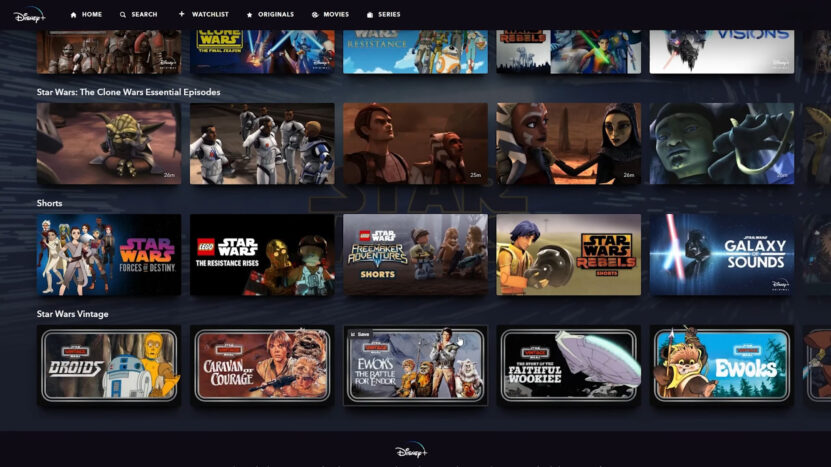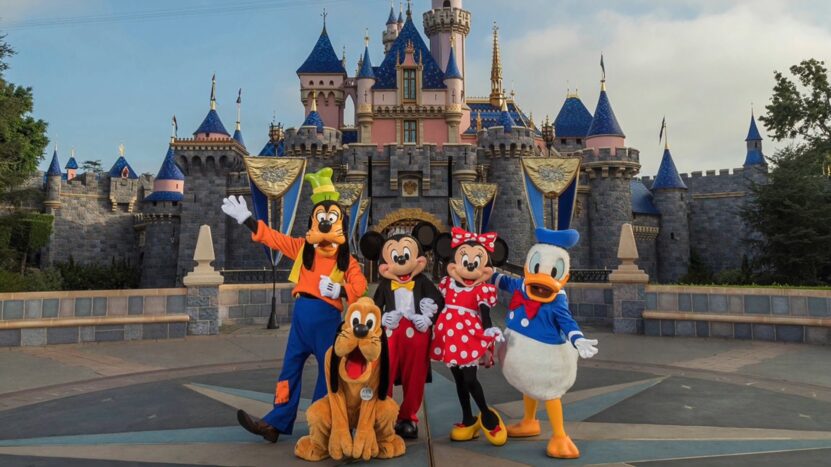The Walt Disney Company is a leading global entertainment company that has a diverse range of businesses. Within its media networks division, it owns popular networks such as ABC, ESPN, and Disney Channel.
In addition, the company also produces and distributes movies and TV shows through its studio entertainment division. Furthermore, it manages theme parks, resorts, and merchandise through its parks, experiences, and products division.
Disney also has a direct-to-consumer and international division, which includes Disney+, Hulu, and its various international operations. These divisions contribute to the company’s revenue, which comes from a variety of sources such as affiliate fees, advertising sales, box office receipts, home entertainment sales, licensing fees, ticket sales, hotel stays, food and beverage sales, and merchandise sales.
While the company does face challenges in the current business landscape, such as the growing competition from streaming services and changing demographics in the United States, Disney is still well-prepared for the future. This is due to its extensive portfolio of intellectual property and its investments in new businesses.
Magic Behind Disney’s Business Model
Disney, often referred to as “The Happiest Place on Earth,” is not just about fairy tales, princesses, and talking animals. Behind the scenes, it operates a vast and intricate business model that has positioned it as a global entertainment juggernaut.
Let’s embark on a journey to understand the four pillars that uphold Disney’s empire.
1. Media Networks

At the heart of Disney’s vast empire lies its Media Networks division. This segment is a blend of the traditional and the modern:
- Traditional Cable Channels: Channels like ESPN, Disney Channel, and ABC have been entertaining viewers for decades. They’ve been the source of many iconic shows that have shaped generations.
- Modern Streaming Platforms: Recognizing the shift in content consumption patterns, Disney has ventured into the streaming world with platforms like Disney+ and Hulu. These platforms cater to a global audience, offering a mix of old classics and new originals.
Revenue Streams
- Affiliate Fees: Cable and satellite providers pay Disney for the privilege of broadcasting their channels.
- Advertising Sales: Commercials that play during breaks on Disney’s channels.
- Subscription Fees: The monthly or annual charges users pay to access Disney’s streaming platforms.
2. Studio Entertainment

Disney’s Studio Entertainment is where the magic begins. This division is responsible for creating the stories that have become a part of our collective consciousness.
- Film and Television Production: From blockbuster movies to binge-worthy TV series, Disney’s studios are behind some of the most beloved content in the world.
Revenue Streams
- Box Office Receipts: The earnings from movie tickets.
- Home Entertainment Sales: This includes DVD and Blu-ray sales, as well as digital downloads.
- Licensing Fees: When other entities want to use Disney’s content, they pay a fee.
3. Parks, Experiences, and Products

Disney’s theme parks and resorts are where fans can live out their favorite stories. This division is a testament to Walt Disney’s dream of a place where adults and children could have fun together.
- Theme Parks and Resorts: From the enchanting castles to thrilling rides, these parks offer a unique experience. They’re not just parks; they’re entire worlds of their own.
- Merchandise: Who hasn’t wanted a toy or apparel featuring their favorite Disney character?
Revenue Streams
- Ticket Sales: Entry fees to the magical world of Disney’s theme parks.
- Hotel Stays: The experience continues with themed hotels and resorts.
- Food and Beverage Sales: Every aspect, including the food, is designed to enhance the magical experience.
- Merchandise Sales: From toys to apparel, these sales add a significant chunk to Disney’s revenue.
4. Direct-to-Consumer and International
As the world becomes more connected, Disney is ensuring it remains at the forefront of global entertainment.
- Direct-to-Consumer Platforms: Platforms like Disney+ and Hulu are available to a global audience, ensuring Disney’s content is accessible everywhere.
- International Operations: Disney’s magic isn’t limited to the US. From theme parks in Paris and Shanghai to channels catering to different countries, Disney’s presence is truly global.
Revenue Streams
- Subscription Fees: For accessing platforms like Disney+.
- Advertising Sales: On platforms like Hulu that offer ad-supported content.
Disney in the Modern Era
Disney, a name that has been synonymous with entertainment for nearly a century, is navigating a rapidly changing business landscape. While the company has faced its share of challenges, it also stands on the brink of numerous opportunities. Let’s delve deeper into the hurdles and prospects that lie ahead for this entertainment giant.
Challenges Disney Faces
Let’s discuss a couple of obstacles that Disney’s business empire encounters.
1. Streaming Wars
- The Rise of Competitors: The entertainment industry has seen an explosion of streaming services. Giants like Netflix and Amazon Prime Video, along with newcomers like Apple TV+ and HBO Max, are vying for the same audience.
- Impact on Traditional Media: As more households cut the cord and shift to streaming, traditional cable and satellite revenues, a significant source of income for Disney’s Media Networks division, is under threat.
2. Demographic Shifts
- Aging Population: The U.S. population is getting older. With fewer children being born and an increasing number of elderly citizens, the demographics are shifting.
- Impact on Theme Parks and Merchandise: Disney’s Parks, Experiences, and Products division has traditionally targeted families, especially those with young children. An aging population could mean fewer families visiting parks and buying merchandise.
Opportunities Awaiting Disney

However, there are also future prospects waiting to be explored.
1. Leveraging Intellectual Property
- Iconic Brands: Few companies can boast of a portfolio as diverse and iconic as Disney’s. With brands like Marvel, Star Wars, Pixar, and the classic Disney characters, the company has a treasure trove of content to draw from.
- Potential for Spin-offs and Merchandising: These brands offer endless possibilities for movies, TV shows, merchandise, theme park attractions, and more.
2. Investment in Direct-to-Consumer Platforms
- Disney+: Disney’s answer to the streaming wars, Disney+ has already garnered a significant subscriber base, showcasing the company’s enduring appeal.
- Bundling Opportunities: With platforms like Hulu and ESPN under its belt, Disney can offer bundled services, providing more value to consumers and ensuring a broader reach.
3. Expanding Global Footprint
- Emerging Markets: While the U.S. market is saturated, emerging markets like India, China, and parts of Africa offer vast untapped potential.
- Local Content Creation: By investing in local content tailored to different cultures and tastes, Disney can resonate with a global audience.
4. Innovative Experiences
- Augmented and Virtual Reality: With advancements in AR and VR, Disney has the opportunity to revolutionize theme park experiences and storytelling.
- Interactive Entertainment: The rise of interactive content, like video games and interactive shows, offers Disney a chance to engage audiences in novel ways.
FAQ
What are the ethical considerations of Disney’s business model?
Disney’s business model has been criticized for a number of reasons, including:
- The company’s use of child labor in its supply chain.
- The company’s portrayal of women and minorities in its content.
- The company’s environmental impact.
How does Disney’s business model differ from other entertainment companies?
Disney’s business model is unique in a few ways. First, Disney has a strong portfolio of intellectual property.
This gives the company a significant advantage over its competitors. Second, Disney is involved in a wide range of businesses, from theme parks to streaming services.
This allows Disney to reach a wider audience and diversify its revenue streams.
Final Words
The Walt Disney Company, a global entertainment behemoth, boasts a multifaceted business model encompassing diverse sectors like media networks, film and TV production, theme parks, and direct-to-consumer platforms. While it reaps revenues from these varied sources, the evolving entertainment landscape presents challenges, especially with the rise of streaming competitors and changing demographics.
However, Disney’s rich legacy, combined with its vast intellectual property and strategic investments, ensures it remains resilient and poised for future growth, adapting to shifts in the industry while continuing to enchant audiences worldwide.
